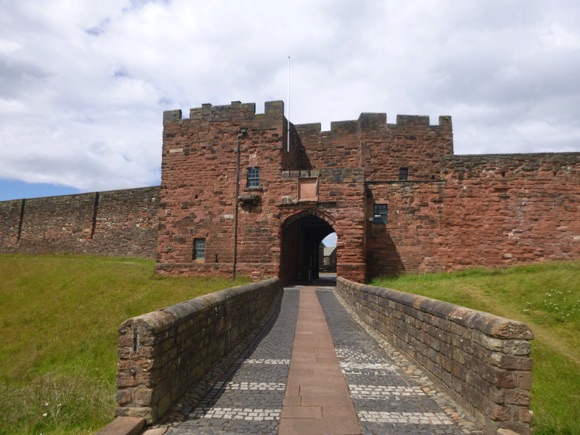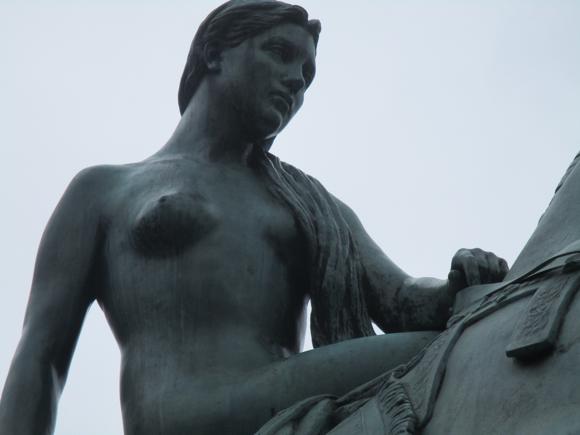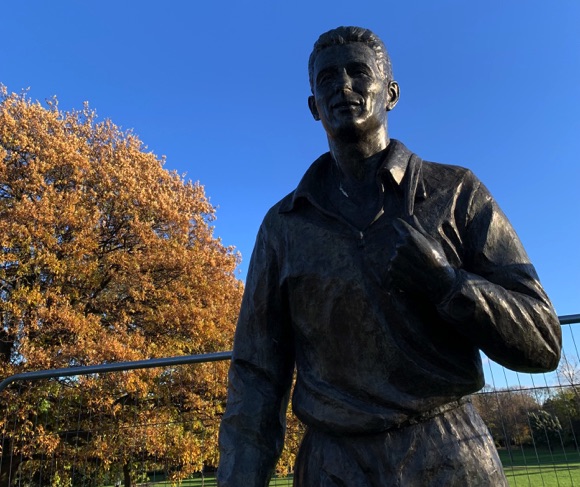Teams, tales and tips – a guide to the local game
County town of Berkshire, built on beer and biscuits, Reading has had a football club since 1871. This makes Reading FC the fifth-oldest of the 92 in today’s Football League.
The history of the Royals can be neatly divided into two distinct eras. The first 120 years were mainly spent at an old-school ground, Elm Park, surrounded by back-to-back terraced housing near Reading West station, the team playing in the lower or lowest league tiers.
From the early 1990s onwards, Reading have mostly been second-flight. In 2006, they rose to a historic first season in the Premier League, finishing close to European qualification. This unfolded in a brand new stadium out by the M4 motorway, corridor for high-tech industries lined from west London to South Wales, Britain’s silicon valley.

The catalyst for this revolution came on board in 1990. Cast into a Reading children’s home during the war, Stoke-born John Madejski became a self-made millionaire and chairman of Reading FC. He built the stadium in question, named it after himself, and installed a four-star business hotel with pool and spa.
In doing so, he also hauled Reading from near demise and a demeaning mooted merger with Oxford, up to the top half of the richest league in the world, in front of season-long capacity crowds.
Soon after opening, his stadium began to host popular rugby side London Irish, and has also staged five England under-21 internationals, the most recent in 2013. Supporters of London Irish, a club still headquartered at Sunbury-on-Thames in Surrey’s stockbrocker belt, brought revenue and good-natured cheer – but this is not the Reading of Robin Friday, not the Reading of hard-drinking maverick footballers who enthralled fans packed onto the terraces of Elm Park.

True, this change of social dynamic has been repeated in traditional football towns all over England but it has been that more pronounced in Reading. Friday, a hell-raising cult hero who only played for the Royals for two full and two half-seasons in the mid 1970s, is still revered. Psychedelic indie band the Super Furry Animals wrote a song about him, Oasis biographer Paolo Hewitt co-wrote a book about him. The notorious town-centre pub Friday was banned from on ten (!) separate occasions has long closed, its building towered over by a gleaming, business-friendly Hotel Novotel.
This was the Reading of unfeasibly wild punk bars, a Reading depicted by Ricky Gervais in his film Cemetery Junction, named after the destination on a busy local bus route.
The fans who followed Friday wouldn’t have dreamed of attending a rugby match. Reading’s only other sport in those days was speedway, a gritty Monday-night experience that took place by the site of a refuse tip – ironically, close to today’s Madejski Stadium. Speedway was last raced there in 2008.

As for the football club, while its local identity remains strong, it has few neighbouring rivals. Reading Town FC, once managed by local boy and ex-England international Neil Webb, folded in 2016, unable to progress beyond semi-pro status. Their main achievement was to reach the first qualifying round of the FA Cup two seasons running, back in 2000. Aldershot folded in 1992. Swindon Town and Oxford United consider each other serious rivals, with milder rebuke reserved for Reading.
For all Reading’s new-found affluence and recent success, even Madejski, now Sir John Madejski, was looking to offload his club halfway through its debut season in the Premier. Having built a £50 million stadium, the sums just didn’t add up.
Madejski has since sold on his controlling stake but remains chairman. Home crowds barely pass the 20,000 threshold and plans to expand the stadium to 37,000-capacity have long been shelved. Meanwhile, London Irish have moved back to London.
Getting Around
Arriving in town, local transport and tips


The nearest airport to Reading is Heathrow, 50km (31 miles) east. A Railair coach sets off every hour from Heathrow Central Bus Station (between Terminals 1 and 2) and stop 9 at Terminal 5 for Reading train station (£20 online or contactless on board, journey time 1hr).
Frequent trains from London Paddington (£25) take 25mins. From Birmingham New Street (every hour, £25-£35), it’s 1hr 30mins. There are also direct hourly services from Manchester (3hr 15mins, cheapest singles £40).
Reading station is a short walk from the town centre. For the stadium, you’ll need a bus that leaves from nearby. A standard single fare is £2, a day pass £4 (contactless/exact fare in change). Match-day shuttles from the station are similarly priced for single tickets – see Reading FC.
Capital Cars (01189 509 509) quote £40 transfers to/from Heathrow.
Where to Drink
The best pubs and bars for football fans





Drinking gets hectic in certain pockets of the mainly pedestrianised town centre, most notably Friar Street/Station Road and Gun Street behind the Oracle shopping centre. Certain places have 3am closing at weekends.
Chain bars are found at Friar Street/Station Road, independent venues on Gun Street and nearby.
Standing out in its namesake colours amid the chain bars around Friar Street, Wild Lime is a handy stop-off, with three big TVs for sport, Sharp’s Cornish Pilsner and Blue Moon North American craft beer served in a bare-brick interior. It does food, too. Opposite, the Monks Retreat is a more traditional option, with a terrace and TV sport. Further along, the Hope Tap is the main Wetherspoons in town.
A short stroll from Friar Street, close to where the town’s bus station used to be, The Gateway was a popular spot when London Irish were in town. Geared more towards the oval-ball game, it remains a homely Irish pub with regular TV football and honest pub grub.





At the train station, built into the old façade before Reading’s rail hub was turned into something more resembling Dubai International, the Three Guineas has always been a busy meeting place. More rugby- than football-oriented, it’s a large space inside and out.
On the other side of Reading Minster from the main shopping strip of Broad Street is a hub of pubs and bars more individual in style. These range from the historic, such as age-old Sun Inn (TV football, jukebox, cribbage) to the more gastro-oriented The Horn (TV football, garden, charity events).
Nearby on Bridge Street, Zerodegrees is the Reading branch of the successful mini-chain also found in Bristol and Blackheath – its formula of on-site micro-brewed ales, TV football and quality food was successful long before the recent fad for craft beers.



A couple of doors down, the Purple Turtle, part alternative hang-out, part live-music venue, part craft-beer bar, is where the punk generation drifted to after the tragic closure of the legendary Star pub nearby. In operation since 1990, the place has now seen three generations of revellers pass though its doors and now programmes films, DJs and comedy nights. Commendably generous opening hours, too (3am Monday-night closing – get in!)
Recently revamped, The Boundary at St Mary’s Butts replaced the popular Pavlovs Dog as a sports bar/pub with large TVs in each corner, a pool table, back terrace and power-points a-plenty for laptop users. Strong WiFi, too. Craft beers, cocktails, burgers and breakfasts fr are further fortes.
Where to stay
The best hotels for the ground and around town






Reading has no local resource for tourist or accommodation information.
A rebrand of the Madejski Stadium Hotels, voco Reading is a business-friendly four-star with a pool, sauna, gym and restaurant, as well as a bar that doubles up as a pre- and post-match haunt. Built into the stadium complex, it’s obviously a convenient choice – but only if you’re on company expenses. There are no pitch views or match-day packages.
The Holiday Inn Reading South is about 15min walk from the stadium – on the south side, so handy for away fans, near a group of car showrooms. The bar is a popular pre-match destination for visiting supporters.
The nearest other option, also walkable (10min) from the stadium, the Hilton Reading is similarly oriented toward the business community. A pool, spa, sauna, gym, bar and restaurant all feature and there are dinner/spa break offers.
Staying in town, the nearest lodging to Reading station is the Malmaison, just over the roundabout, sells itself as a contemporary revamp of ‘the oldest station hotel in the world’, dating back to 1844. All is now urban and sophisticated, with roll-top baths in the 75 rooms.









Round the corner on Friar Street, the pool-equipped Novotel and adjoining ibis Reading Centre provide convenient four-star and budget-chain lodgings.
Nearby and also handy for the station, an affordable choice is the Blagrave Rooms, formerly La Baguette as it was also a sandwich shop, a useful bolthole if the nearby chains have sold out of their cheaper rooms.
On the other side of Forbury Gardens, The Roseate, the former Forbury, is opulence itself, a century-old former county hall, now a 23-room luxury lodging. Also historic, the Mercure George is set in a 15th-century coaching inn, all cobblestones and original timberwork. Guest rooms are mid-range in comfort and price. Round the corner, ibis Styles offers low-cost lodging as central as it gets.
Opposite each other at the edge of the town centre, the pentahotel Reading is now stylish and contemporary, with a large destination bar while the Travelodge Reading Central offers the standard budget stay.











































































